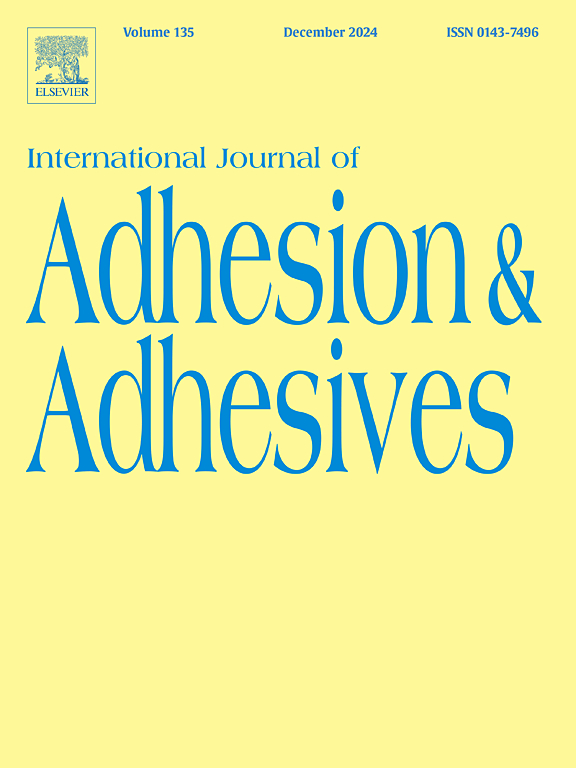Thermal stability and degradation of a low refractive index photo-crosslinkable adhesive
IF 3.2
3区 材料科学
Q2 ENGINEERING, CHEMICAL
International Journal of Adhesion and Adhesives
Pub Date : 2025-01-30
DOI:10.1016/j.ijadhadh.2025.103956
引用次数: 0
Abstract
In some laser assemblies, optical components are glued on their metal mount using a photocrosslinkable adhesive. All these components are submitted to medium to high temperatures for several hours upon laser's operation time. The subsequent thermal stresses endured by the adhesive could lead to its degradation, alter thus the functioning of the assembly and impact the alignment of the laser, key issues in laser applications. This work focuses on the investigation and the modeling of the lifespan, the degradation in the face of thermal stresses, particularly those generated by a laser, and of the ageing of a photocrosslinkable adhesive, PC373HA. The thermal characterization is performed using ThermoGravimetric Analysis and allows for the development, the validation and the comparison of three models based on Arrhenius' law to estimate the lifetime of adhesives as a function of temperature. A temperature of 150 °C is identified as a threshold to ensure limited degradation over the 15 h requested for laser operation endurances. The Ozawa-Flynn-Wall model and the Kissinger-Akahira-Sunose model correctly reproduce PC373HA's thermal behavior submitted to different thermal scenarii (temperatures, heating rates …). Both show that the higher the temperature, the faster the degradation process, approximately 10 min at 220 °C and 100 min at 180 °C, much less than the required 15 h. Besides, in the event of an incident with the laser, if the temperature exceeds 200 °C for more than 10 min or 180 °C for more than 100 min, corrective action should be taken, and the adhesive should be replaced. These models therefore provide fundamental information for laser applications and will allow the implementation of preventive solutions during use but also in case of incident.
求助全文
约1分钟内获得全文
求助全文
来源期刊

International Journal of Adhesion and Adhesives
工程技术-材料科学:综合
CiteScore
6.90
自引率
8.80%
发文量
200
审稿时长
8.3 months
期刊介绍:
The International Journal of Adhesion and Adhesives draws together the many aspects of the science and technology of adhesive materials, from fundamental research and development work to industrial applications. Subject areas covered include: interfacial interactions, surface chemistry, methods of testing, accumulation of test data on physical and mechanical properties, environmental effects, new adhesive materials, sealants, design of bonded joints, and manufacturing technology.
 求助内容:
求助内容: 应助结果提醒方式:
应助结果提醒方式:


